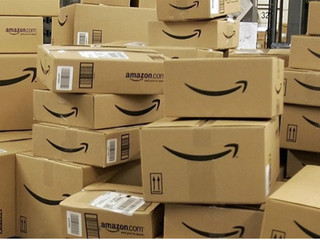Global AI in healthcare market expected to rise to $164B by 2030
The market size for 2023 was $10.31 billion
Read more...
With another Christmas come and gone, the holiday shopping season is, mercifully, over for at least another 11 months or so (though, given how much earlier it seems to start every year, it wouldn't surprise me if stores eventually started putting up their new holidays on December 26th!).
Now, that means we can all sit back, relax and scrutinize the numbers to see how the season measured up. In all, it was pretty good, though it probably could have been better.
Starting from November 1st until December 22nd, retail e-commerce spending in the United States, done from a desktop computer, was $42.8 billion, according to data released from comScore on Thursday. That is an increase of 10% over the $38.9 billion spent in the same period in 2012.
Pretty impressive, right? Well, maybe not. In fact, sales were significantly weaker than comScore had originally forecasted.
Back around Thanksgiving, the digital market research firm had predicted that sales would rise 14% year to year, to $48.1 billion. That was based on the 14% increase that sales saw for the first 24 days of the shopping season.
So what happened? The short season was at least one factor, comScore chairman Gian Fulgoni wrote, along with too much price cutting.
"In the end, I think we’ll look back at this online holiday season as one where absolute dollar sales gains in consumer spending were held back by heavy retailer price discounting that occurred in an attempt to stimulate consumer demand, while at the same time, consumers weren’t willing or able to increase their spending rate to fully compensate for the six-day shorter shopping period between Thanksgiving and Christmas," said Fulgoni.
The numbers
In the end, all of the big shopping days this year saw at least a 10% gain on the same day last year.
Thanksgiving Day was by far the lowest of all shopping days this season, with $766 million (good for you, everyone who didn't shop on Thanksgiving! Way to stick it to those awful retailers who forced their employees to work that night!), though it did have the biggest increase of 21% (sigh, I take back my compliment).
Cyber Monday, meanwhile, kicked butt, with $1.7 billion dollars spend from desktop computers that day, and increase of 18% from $1.5 billion last year.
Green Monday, on the other hand, only saw a 10% increase year to year. Maybe that is because most people, including me, have never heard of it. (Apparently it is the Monday with at least 10 days prior to Christmas? Which is just confusing and unnessecary and can we please stop trying to name every day of the shopping season?)

As for the sectors that drove the most sales, video games, apparel and consumer electronics lead the pack.

Before everyone gets all upset and starts talking about how the economy needed a boost and because sales were down it is going to crash and the sky is going to fall... just take a breath and remember: dven though desktop numbers may have been down more than expected, I would wager a good amount that most of that will be made up once mobile is factored in.
And there are two pieces of evidence to support that theory: first, UPS and FedEx were so overwhelmed with last minute orders that most people did not even get their firsts. And, second, Amazon revealed on Thursday that more than half of its customers shopped from a mobile device this holiday season.
(Image source: https://technorati.com)
The market size for 2023 was $10.31 billion
Read more...At Culture, Religion & Tech, take II in Miami on October 29, 2024
Read more...The company will use the funding to broaden the scope of its AI, including new administrative tasks
Read more...
